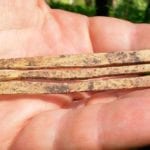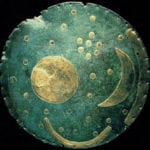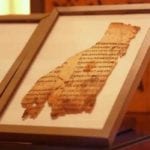 Music
Music  Music
Music  History
History 10 Less Than Jolly Events That Occurred on December 25
 Weird Stuff
Weird Stuff 10 Funny Ways That Researchers Overthink Christmas
 Politics
Politics 10 Political Scandals That Sent Crowds Into the Streets
 Weird Stuff
Weird Stuff Ten Bizarre Facts About The Doge Meme
 Our World
Our World 10 Ways Your Christmas Tree Is More Lit Than You Think
 Movies and TV
Movies and TV The 10 Coolest Stars to Set Sail on The Love Boat
 History
History 10 Things You Didn’t Know About the American National Anthem
 Technology
Technology Top 10 Everyday Tech Buzzwords That Hide a Darker Past
 Humans
Humans 10 Everyday Human Behaviors That Are Actually Survival Instincts
 Music
Music 10 Surprising Origin Stories of Your Favorite Holiday Songs
 History
History 10 Less Than Jolly Events That Occurred on December 25
 Weird Stuff
Weird Stuff 10 Funny Ways That Researchers Overthink Christmas
Who's Behind Listverse?

Jamie Frater
Head Editor
Jamie founded Listverse due to an insatiable desire to share fascinating, obscure, and bizarre facts. He has been a guest speaker on numerous national radio and television stations and is a five time published author.
More About Us Politics
Politics 10 Political Scandals That Sent Crowds Into the Streets
 Weird Stuff
Weird Stuff Ten Bizarre Facts About The Doge Meme
 Our World
Our World 10 Ways Your Christmas Tree Is More Lit Than You Think
 Movies and TV
Movies and TV The 10 Coolest Stars to Set Sail on The Love Boat
 History
History 10 Things You Didn’t Know About the American National Anthem
 Technology
Technology Top 10 Everyday Tech Buzzwords That Hide a Darker Past
 Humans
Humans 10 Everyday Human Behaviors That Are Actually Survival Instincts
10 Controversial Artifacts That Could Have Changed History
It may take a fair bit of research and testing, but archeologists are mostly pretty decent at figuring out if something is a genuine artifact or a complete forgery. Sometimes, though, it’s not that easy, and even the most learned scholars are left shrugging their shoulders or duking it out with scholars of the opposing opinion.
10Dumbuck Crannog

On July 31, 1898, artist and amateur archaeologist William Donnelly apparently made an incredible discovery at Dumbuck on the northern shore of Scotland’s Firth of Clyde. An ancient stone-and-timber breakwater, perhaps dating back to the 2nd century BC, perfectly preserved by a change in the river’s path. It was enough to warrant a full-scale excavation, and when we say “excavation” we mean in the 19th century sense of hacking away with spades. The general public were even allowed to wander onto the site and do some digging for treasures of their own.
Despite the primitive techniques, the excavation did turn up a log boat, lots of bones, and a number of extraordinary carved shales. These stones, inscribed with faces and images of animals, were unlike anything previously found in Scotland. And that’s where the controversy started. In 1899, the eminent archeologist Robert Munro came forward to argue that the site had been compromised by the chaotic dig and that the carvings were almost certainly forgeries.
Munro’s comments kicked off a massive war of words with Donnelly and his supporters and the Glasgow Herald and the Evening Times published tens of thousands of words arguing back and forth over whether the find was real. In 1905, Munro brought out the heavy artillery, publishing a 400-page book proving in painstaking detail that the shales were a modern fraud. Donnelly died shortly afterward, supposedly from the strain of dealing with the controversy. Modern historians side with Munro, with antiquarian Alex Hake telling the Scotsman that “the site itself is bona fide. It’s recognized as a crannog, but it’s clear the shale artifacts are fakes.”
In 1998, archaeologists went back and excavated a single trench through the site, in hope of making sense of what was left. They discovered fake artifacts still sitting where they were planted, but no clue as to who planted them. Donnelly’s rage at the suggestion they were fake seemed to rule him out and so many people were milling about the excavation site that they could have been “discovered” by almost anyone.
9The Praeneste Fibula
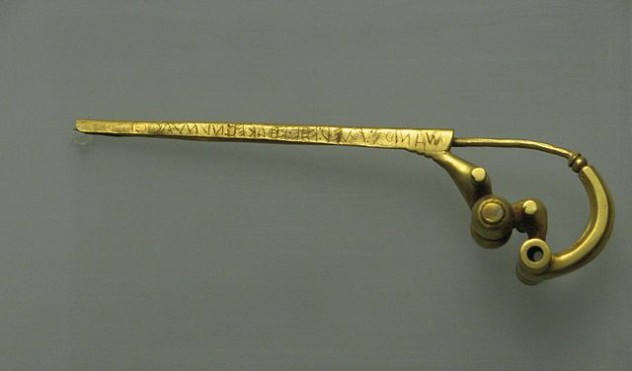
If it’s real, the Praeneste Fibula would be perhaps the earliest Latin inscription ever found. According to Wolfgang Helbig, the scholar who presented it to Rome’s German Institute in 1886, the gold dress pin had been discovered in 1871 at a site dating to the 6th century BC. He didn’t tell them the whole story, though, leaving out the fact that he had acquired it from Francesco Martinetti: smuggler, forger, and seller of less-than-reputable antiquities. When that bit of information got out, the pin started to look a little suspicious.
For starters, it was supposedly found in the Bernardini Tomb, which was excavated in 1876, not 1871. Helbig wasn’t able to explain where in the tomb it was found or who discovered it. But he had a good reputation as an archeologist and suspicions about the pin were mostly ignored until 1980, when expert Margherita Guarducci undertook a detailed study of the piece. Guarducci found that the gold used in the pin had been treated with an acid, presumably to make it look old. Otherwise, it didn’t resemble any other ancient gold found in the area. And the inscription itself bore a striking resemblance to samples of Helbig’s own handwriting.
Martinetti was definitely shady—his house was torn down after his death, revealing countless fakes hidden inside. But why would a respected scholar like Helbig help Martinetti deal in forgeries? Especially since he was married to a wealthy Russian princess and definitely didn’t need money. The writer William Calder speculated that he might have been subject to blackmail, thanks to his regular visits to the house of art collector Edward Perry Warren, where “women were not welcomed.”
But that’s just speculation and experts are now beginning to think that Helbig might be vindicated after all. In 2011, the Prehistoric and Ethnographic National Museum held a round table of experts in the hopes of getting to the bottom of the matter of the pin once and for all. Their decision, made with the benefit of new technology not available to Guarducci, was that the pin was absolutely authentic, inscription and all.
8The Jordan Lead Codices
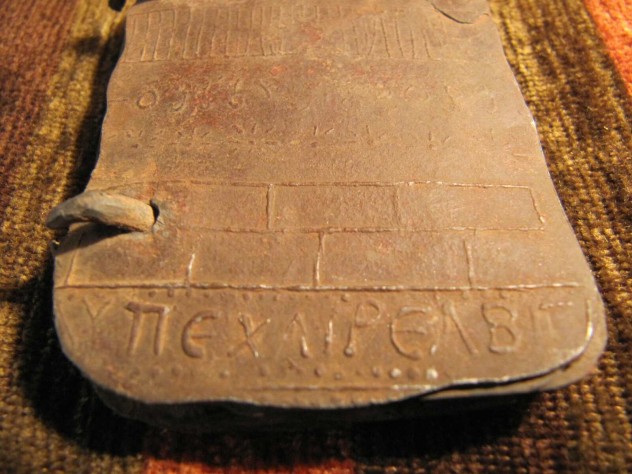
In 2011, the archeological world was abuzz with the news that a treasure trove of ancient lead codices had been found in a cave in Jordan. Touted as authentic by the Jordanian authorities, the ancient books had about 15 lead pages each, held together with rings like an ancient binder. It was speculated that the codices might have been compiled by Jewish mystics or by an early group of Hebrew Christians who fled Jerusalem for the safety of the desert.
But immediately after the initial Jordanian statement, all news about the codices ceased. Meanwhile, historians studied the images of the codices and concluded that they appeared to be clear forgeries, featuring “crude representations of publicly available images.” A metallurgy test by Oxford University concluded that the lead books weren’t modern, but could have been made at any time prior to the 20th century, raising the possibility that the codices were simply a set of 19th century fakes that were mistaken for the real thing by their overeager discoverers.
While Jordanian officials remain silent on the matter, others have taken a crack at authenticating or debunking the codices. According to Aramaic translator Steve Caruso, the inclusion of newer letters with genuinely ancient ones makes it clear that the inscriptions are fake. Archaeologists from Oxford have gone further and claimed that the inscriptions are at most 50 years old, but other scholars continue to believe they could be real.
7The Pevensey Bricks
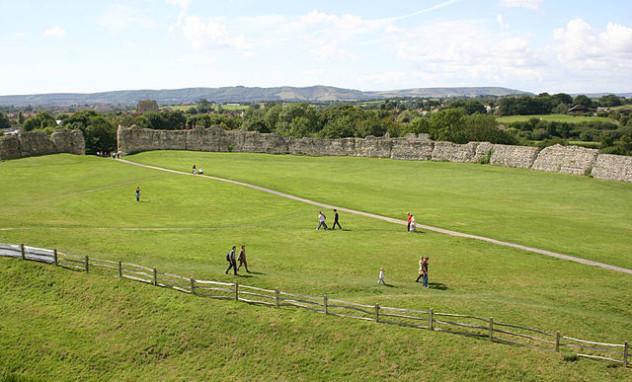
A Pevensey Brick is currently in the collection of the British Museum—with the addendum that it’s “probably a fake.” The artifact is one of at least two fired clay bricks or tiles stamped with the letters “HON AVG ANDRIA” found in Pevensey, Sussex. If the bricks are real, they would be evidence of the last major building project before the Romans abandoned Britain in the reign of Emperor Honorius. It is assumed that “HON AVG” stands for “Honorius Augustus,” with “ANDRIA” standing for a previously undated Roman shore fort known as Anderida (the remains of which are pictured).
The problems start with the man who supposedly discovered the bricks: Charles Dawson. If that name sounds familiar, its because Dawson also “discovered” the Piltdown Man fossil, one of the most infamous hoaxes in archeological history. The lettered bricks were apparently discovered during an excavation he carried out in 1902. We’re not even sure how many of them Dawson claimed to have found. Records detail the existence of three, with suggestions of a fourth, but there are currently only two confirmed examples in the British Museum and the Lewes Museum.
Tests now indicate that the bricks were probably made sometime in the last 350 years, although the Lewes brick at least seems to have been repaired, leading to suggestions that the tests could be inaccurate. However, the tests and anomalies in the style of the stamping on the bricks seem to indicate that they’re another of Dawson’s fakes.
6The Davenport Tablets
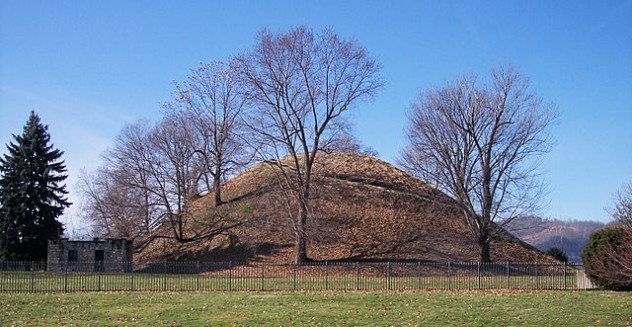
The Davenport Academy was a major force in early American amateur archeology. Unfortunately, the organization ended up lending its name to one of the most ridiculous hoaxes in American history. In 1877, Reverend Jacob Gass claimed to have found a set of four inscribed tablets buried in an ancient mound in Iowa. Gass was quickly invited to join the Davenport Academy, which contained many supporters of the “Mound Builders” myth.
This theory, now entirely discredited, argued that Native Americans were too primitive to have built the giant earthworks that dot the American countryside. Instead, 19th century historians believed that a “lost white race” must have built the mounds. The Davenport Tablets seemed to support this hypothesis, since the writing was clearly influenced by early European languages. Historians across America quickly set to work to decipher the baffling text.
After eight years of studying the tablets, the ethnologist Cyrus Thomas sensationally concluded that the tablets were complete frauds. Experts had been unable to decipher the text because it was actually a random collection of letters and symbols from a variety of different languages. Even musical notation was mixed in. To make matters worse, many of the symbols were simply pulled straight from page 1,766 of the 1872 edition of Webster’s Dictionary.
This was a huge blow to the Davenport Academy and president Charles Putnam made matters worse by furiously trying to defend the tablets as authentic. However, the best argument he could muster involved nitpicking minor details in Thomas’s article. For example, he pointed out that Thomas had described an inscription surrounded by four lines, when it fact it was only surrounded by three. Unsurprisingly, most people were unconvinced and the Davenport Academy and the Mound Builders theory both underwent a rapid decline.
5The Hercules Sarcophagus
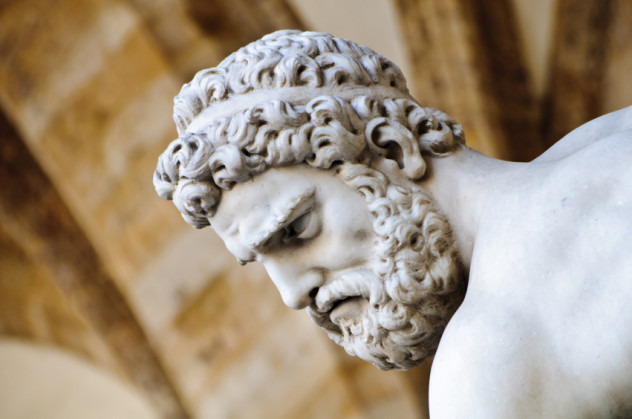
The ancient Greek hero Hercules has long had an association with the Iberian Peninsula. In one version of the legend, the 10th of the demigod’s famous Twelve Tasks was retrieving the cattle of Geryon. Along the way, he shortened the trip a bit by smashing the Atlas Mountains and joining the Mediterranean Sea to the Atlantic Ocean. Even today, the straight between Gibraltar and Morocco is said to be flanked by the Pillars of Hercules. In another legend, Hercules died in Spain while leading an army there.
So there was great excitement in 1850, when Spanish stoneworkers uncovered a sarcophagus with detailed carvings that seemed to show Hercules surrounded by the signs of the zodiac and leading a procession of people and animals from Egypt to Spain. The workers had smashed the sarcophagus before realizing it might be important, but the pieces were supposedly collected and reassembled by local historian Buenaventura Hernandez y Sanahuja.
He published his findings in a book, concluding that an ancient people known as the Hyskos had fled to Spain after being driven out of Egypt, which they had ruled for a century between 1650–1550 BC. Hernandez y Sanahuja argued that a Hercules figure led an Egyptian expedition to Spain, where he teamed up with the locals to destroy the Hyskos once and for all, perishing himself in the final battle. This idea had a mixed reception in Spain, and was laughed out of town everywhere else, along with the carvings, which have been described as “cartoon-like” forgeries. Embarrassed, Hernandez y Sanahuja destroyed almost all copies of his book, although his work still turns up in some of the more outlandish pseudo-historical theories.
4The Secret Gospel Of Mark
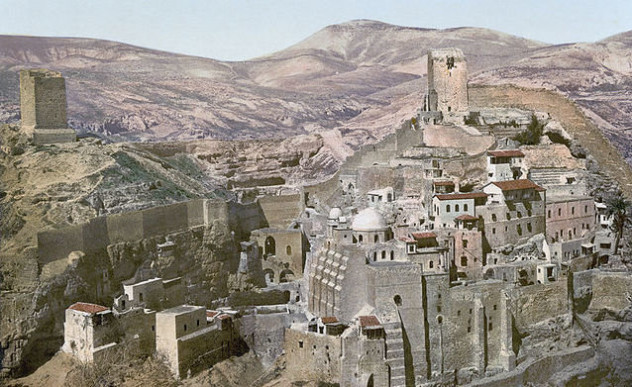
The supposed Secret Gospel of Mark was discovered by an apparently reputable source: Columbia University professor Morton Smith. In 1973, Smith released two books claiming to have stumbled across a letter in the ancient monastery of Mar Saba (pictured). The letter was supposedly written by the early church father Clement of Alexandria and detailed the existence of a longer version of the Gospel of Mark, intended only for full initiates into the “mysteries” of Christianity. This long version apparently included Jesus raising a young man from his tomb, and a subsequent meeting between Christ and the recently raised boy.
The sections summarized in the letter seem somewhat suggestive, featuring the youth visiting Jesus at night “wearing a linen cloth over his nakedness” to be “initiated into the mystery of the Kingdom of God.” The letter’s version of Clement evidently agreed, complaining that heretical sects obsessed with “carnal doctrine” were falsifying the text to support their own interpretation. The letter ends with Clement recommending that the very existence of the Secret Gospel should be denied at all costs.
So is the letter real or a forgery? Well, it’s hard to be sure, since nobody can actually find it and Morton Smith apparently had most of his papers burned when he died in 1991. Under these circumstances, the letter would usually be dismissed as a fake, but Morton Smith was a genuinely respected scholar and many experts are reluctant to regard him as a forger without firm evidence. Whole books have been written debunking the letter, while others argue that it is authentic.
Almost nobody believes that the Secret Gospel alluded to in the letter was the original Gospel of Mark, cut down to produce the shorter version in the Bible. There just isn’t any other evidence for the existence of a longer gospel, even though it would doubtless have been a topic of hot debate at the time. That leaves the theory that Smith forged the whole thing, although it remains impossible to say for sure. Another possibility is that the letter is an ancient forgery, although the motive for that would be unclear.
Perhaps the most intriguing theory is that Clement did write the letter, but was wrong in his belief that Secret Mark was the original Mark. Clement was known to have a fascination with mystery rituals and might have been attracted to the idea of similar secret knowledge within Christianity. In fact, the dubious nature of some of Clement’s ideas caused the Catholic Church to drop his feast day in 1600, while the Eastern Orthodox Church is similarly reluctant to regard him as a full saint. But, again, there simply isn’t enough evidence to be sure.
3Newark Holy Stones
Beginning in 1860, a Newark, Ohio, man named David Wyrick supposedly discovered two pretty incredible artifacts. The first, dubbed the “Decalogue Stone,” was a piece of limestone carved with an image of Moses and the Ten Commandments. The second was “the Keystone,” a wedge-shaped stone carved on four sides with the phrases “Holy of Holies,” “King of the Earth,” “The Law of God,” and “The Word of God.” While the Decalogue Stone is inscribed with an odd version of Hebrew, the Keystone uses Hebrew letters that date back to the time of the Dead Sea Scrolls.
The stones were initially touted as evidence of an ancient Jewish presence in North American, but experts now almost unanimously consider them to be hoaxes. Among other things, the Decalogue Stone is written in a garbled version of modern Hebrew and contains marks from a 19th century grinding stone. In fact, the biggest mystery surrounding the stones now seems to be the question of who forged them. Wyrick is the obvious suspect, but his sketches seem to indicate he lacked the artistic talent needed to carve the figure of Moses. So either someone else made the stones or Wyrick was particularly smart at hiding his con.
Meanwhile, various conspiracy theorists (and the History Channel) continue to tout the stones as genuine artifacts covered up by a nefarious archeological conspiracy. In fact, the History Channel documentary featured above led archeologist Brad Lepper to pen an acerbic response: “The idea that my colleagues and I are hiding the supposed truth about the Decalogue Stone is the most absurd claim of all. If we had actual evidence to prove that Hebrews had traveled to ancient America, we would get our pictures on the cover of National Geographic magazine. Large grants would be lavished upon us and we would get to re-write the textbooks. Why would I choose to remain an underpaid museum archaeologist when “fortune and glory” were within my grasp?”
2The Grolier Codex
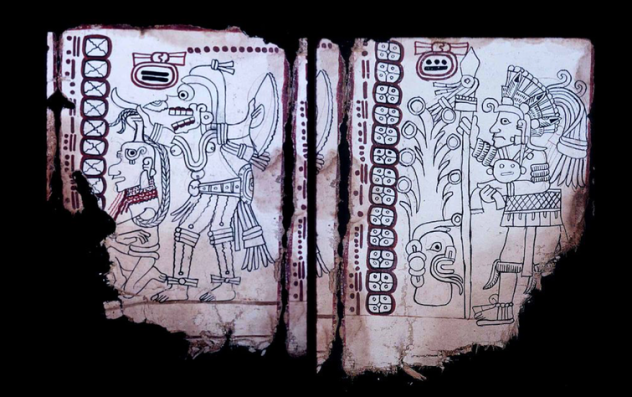
In 1966, Mexican collector Josue Saenz was approached by a nameless person and told to get on a plane and not ask any questions. Naturally, Saenz agreed and was taken to an unknown location and given the opportunity to buy a supposed Mayan artifact known as the Grolier Codex.
At least, that’s the story told by Michael Coe, who first put the Codex on public display at New York’s Grolier Club. The book, which consists of 11 pages depicting images like the Mayan goddess Ix Chel, was supposedly found in a dry cave somewhere in Mexico and then sold to Saenz by persons unknown. If it’s real, the implications could be staggering. All but three Mayan codices were destroyed by the Spanish invaders, so a fourth survivor would be huge.
Obviously, the Grolier Codex’s mysterious origins quickly led to suspicions that it was a forgery. However, while previous attempts to forge Mayan codices contained obvious errors, it has been difficult to definitively prove the Grolier Codex a fake. It doesn’t contain any glaring mistakes and the paper seems to date to the correct period. On the other hand, blank Mayan paper isn’t uncommon, raising the possibility that someone used authentic paper to create a fake book. And the edges of the paper seem to have been cut cleanly, as with metal scissors or a knife, which the ancient Maya didn’t have.
Other details seem wrong. For example, the Codex centers around the movements of Venus, but doesn’t feature gods associated with Venus. And it doesn’t contain clear predictions, which are believed to have been the main purpose of Mayan codices. But since there are only three confirmed codices left, it’s hard to be sure if we have a clear picture of what they actually normally looked like.
1James Ossuary

The James Ossuary itself is the real thing, originating somewhere between the first century BC and 70 AD. It’s a rather unassuming-looking limestone box, one of a countless number of similar relics used to house the bones of the deceased. The controversy comes from a simple Aramaic inscription on the ossuary. If real, it could be the earliest known mention of Jesus Christ.
The inscription reads “James, son of Joseph, brother of Jesus.” It was originally authenticated by scholars from the Hebrew University of Jerusalem. However, a later investigation by the Israel Antiquities Authority declared it was a fake. The ensuing hail of fire and brimstone resulted in one of the largest forgery trials in recent history.
The ossuary’s owner, Oded Golan, was charged with leading a gigantic criminal operation centered around forging valuable antiquities. The trial lasted 7 years and featured 400 exhibits and 12,000 pages of documents. It resulted in the accused being cleared of all forgery charges, but the debate around the relic’s authenticity remains.
For starters, nobody seems to know where the ossuary actually came from. Golan claims to have bought it in 1976, but has no idea where it was originally found. An intriguing possibility surfaced in 2015, when geologist Aryeh Shimron claimed to have linked chemical samples from the James Ossuary to the soil of the Talpiot Tomb. An archeological site in Jerusalem, the Talpiot Tomb contained 10 ossuaries with names like “Jesus, son of Joseph” and “Mary,” leading to speculation that it could be the family tomb of Jesus. Only nine of the ossuaries from the tomb are accounted for. Perhaps the James Ossuary is the 10th?
The hypothesis is interesting, but there are three problems. Firstly, the Talpiot Tomb was excavated in 1980, four years after Golan says he bought the James Ossuary. However, it’s worth noting that artifacts bought after 1978 can be seized by the Israeli government, giving Golan good reason to claim an earlier date. The second problem is that the 10th ossuary from Talpiot didn’t just vanish—the archeologists who discovered it said it was so broken and uninteresting that they threw it out. Finally, even if the James Ossuary was from Talpiot, that doesn’t definitely connect it to Christ. Archeologists note that the name Jesus wasn’t uncommon at the time and generally reject a link between Talpiot and the Biblical figure.





